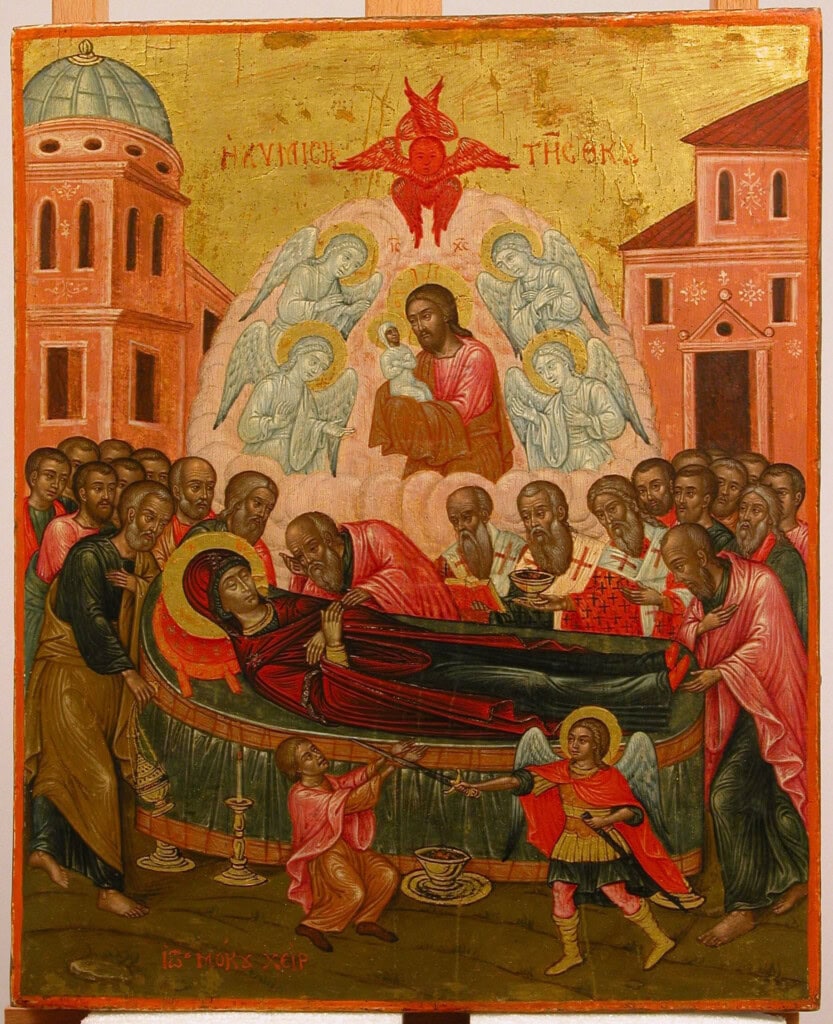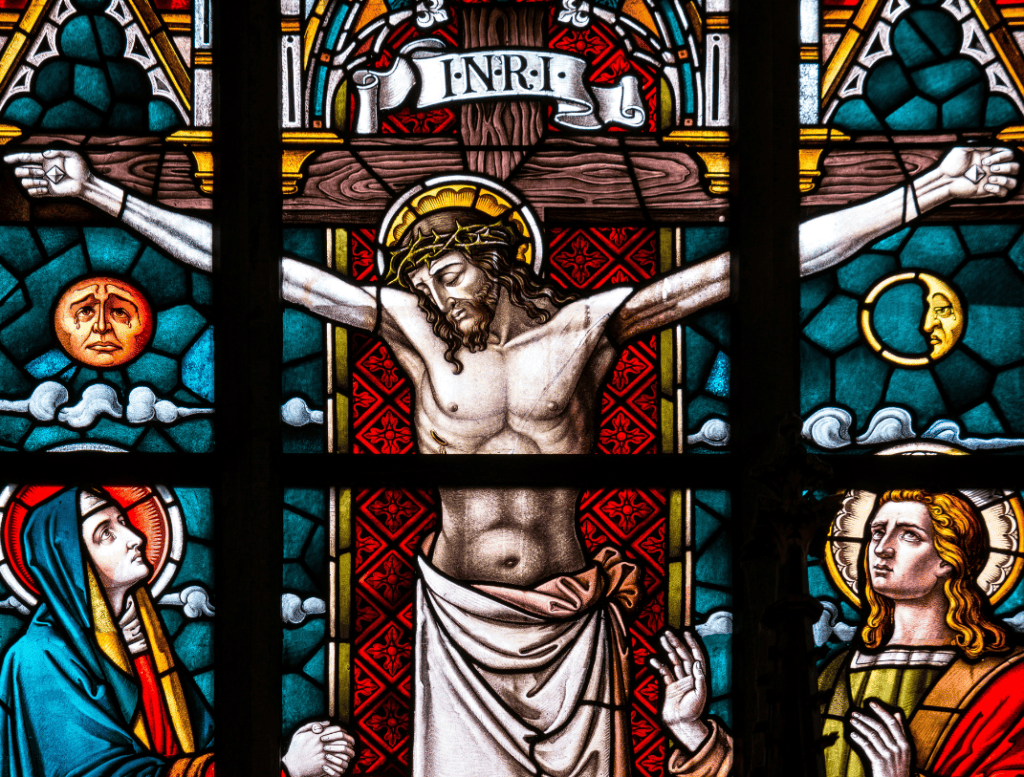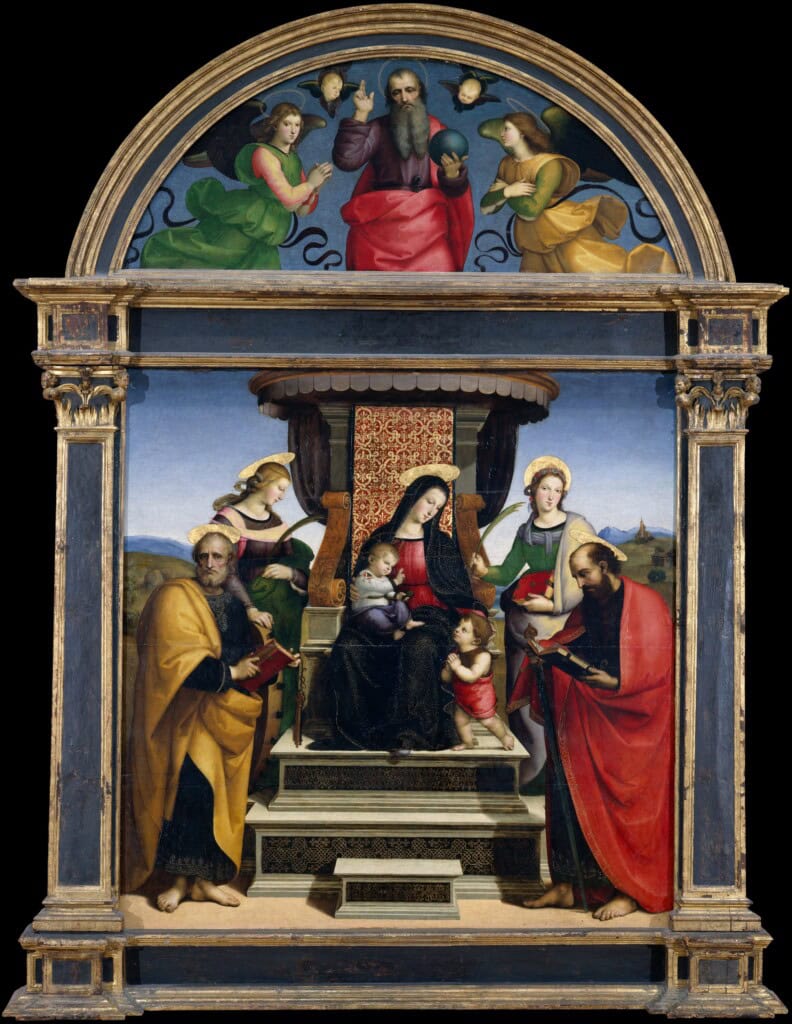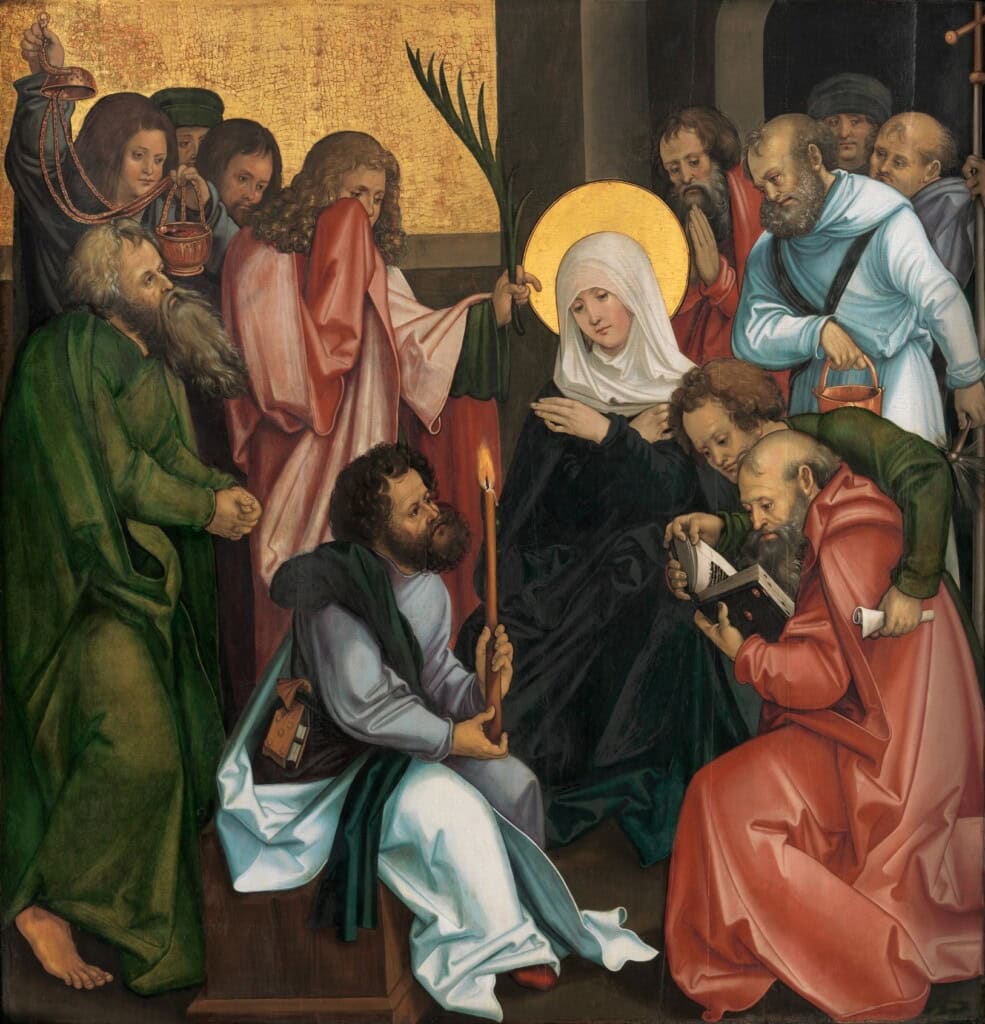Assumption of Mary: The Dormition of the Theotokos, Holy Mother of God

The Feast of the Dormition of the “Most Holy Theotokos” is celebrated on August 15 in the Orthodox tradition, and its Western counterpart, the Assumption of the Blessed Virgin Mary, represents profound theological events in the Christian liturgical calendar. These feasts commemorate the death (Dormition), resurrection, and bodily assumption of the ever-Virgin Mary, the Mother of Jesus Christ.
The Feast of the Dormition and the Assumption of the Virgin Mary: A Theological and Historical Exploration
This article traces the origins of these feasts, explores their theological significance, and highlights the differences in emphasis between the Eastern and Western Christian traditions of the Divine Liturgy. The Dormition/Assumption reflects the Church’s belief in Mary’s unique role in salvation history and her participation in the resurrection of Christ, leading to her exaltation as Queen of Heaven. Her Son, Jesus Christ, was sent to deliver our souls from death.
Assumption of Mary: Celebrate the Dormition of the Theotokos
One of the most significant Marian celebrations in Christianity is the Feast of the Dormition of the Theotokos, also known as the Assumption of Mary in the Western Church. Both traditions honour the end of the Virgin Mary’s earthly life and her entrance into heavenly glory, body and soul. However, the feast is marked by different emphases: the Orthodox Church focuses on Mary’s Dormition, or “falling asleep,” while the Catholic Church highlights her Assumption into heaven.
This article examines the historical development and theological significance of this feast, its early Christian roots, and its evolution within the Byzantine and Western traditions. By understanding the nuances between the Dormition and Assumption, we gain insight into the different ways that Eastern and Western Christians perceive Mary’s role in salvation history and her glorification in heaven. For more about “Mary the Magdalene”, The Magnificat, you can read our article, The Mary Magdalene Code! The Gospel Revelation of Jesus’ Wife.
 Historical Origins of the Feast of the Mother of God
Historical Origins of the Feast of the Mother of God
The great Feast of the Dormition/Assumption dates back to the early centuries of Christianity, though the feast itself did not become universal until later. The earliest Christian writings about Mary’s death and Assumption into heaven come from apocryphal texts, such as the Transitus Mariae, which circulated between the 3rd and 5th centuries. These texts describe how the Apostles were miraculously transported to be present at Mary’s death and how she was taken up into heaven by angels.
In the Eastern Church, the Dormition of Mary was already widely celebrated by the 5th century. The Byzantine Emperor Maurice (539–602) officially extended the feast to the entire Byzantine Empire, establishing August 15 as the date of the celebration. The feast was known as the “Dormition of the Mother of God,” and it was particularly associated with the city of Jerusalem, where Mary was believed to have ended her earthly life.
In the West, the feast of the Assumption became more widely recogniseds in the 6th century. However, in the 9th century, the Feast of the Assumption was officially prescribed for the Frankish Empire by a council held in Mainz under the reign of Charlemagne. Despite these early developments, the dogma of the Assumption was not formally defined by the Catholic Church until Pope Pius XII proclaimed it as an article of faith in 1950 through the apostolic constitution Munificentissimus Deus.
Theological Significance
The theological significance of the Dormition/Assumption of Mary is deeply rooted in the Church’s understanding of her role in salvation history. The belief that Mary was assumed body and soul into heaven is closely linked to her unique participation in the mystery of Christ’s Incarnation and Resurrection.
 The Dormition in the Eastern Tradition
The Dormition in the Eastern Tradition
In the Orthodox Church, the Dormition is understood as the “falling asleep” of Mary, emphasising her peaceful and holy death. Orthodox theology teaches that Mary, being free from sin, experienced a death that was devoid of the usual pain and suffering associated with human mortality. The feast also celebrates her bodily resurrection and Assumption into heaven, a foretaste of the general resurrection that awaits all believers. The Dormition is celebrated with great solemnity in the Orthodox Church.
A two-week fast precedes the feast, during which the faithful prepare themselves spiritually through prayer and fasting. The liturgical services of the Dormition often include hymns and prayers that emphasise Mary’s role as the Theotokos (God-bearer) and her ongoing intercession for the Church. The feast is also associated with communal joy and hope, as Mary’s Dormition is seen as a prefiguration of the resurrection and glorification that await all the faithful.
The Assumption in the Western Tradition
In the Catholic Church, the Solemnity of the Assumption of Mary is primarily understood as the moment when she was taken up into heaven, body and soul. The Assumption is viewed as a culmination of Mary’s life, reflecting her unique status as the Mother of God and her participation in the redemptive work of Christ. Catholic theology teaches that Mary, who was preserved from original sin by the grace of her Immaculate Conception, was also granted the privilege of being assumed into heaven without experiencing bodily corruption.
 The Assumption is not merely a commemoration of Mary’s death but a celebration of her exaltation in heaven as the Queen of Angels and Saints. This belief is supported by the imagery of Revelation 12, which portrays a woman “clothed with the sun, with the moon under her feet and a crown of twelve stars on her head.” Catholic tradition interprets this vision as a symbol of Mary’s heavenly glorification, emphasising her role as the new Eve and the Mother of the Church.
The Assumption is not merely a commemoration of Mary’s death but a celebration of her exaltation in heaven as the Queen of Angels and Saints. This belief is supported by the imagery of Revelation 12, which portrays a woman “clothed with the sun, with the moon under her feet and a crown of twelve stars on her head.” Catholic tradition interprets this vision as a symbol of Mary’s heavenly glorification, emphasising her role as the new Eve and the Mother of the Church.
East and West: Differences in Emphasis of the Dormition of the Mother
While the Dormition and the Assumption celebrate the end of Mary’s earthly life and her glorification in heaven, there are notable differences in emphasis between the Eastern and Western traditions.
In the Eastern Orthodox Church, the focus is on the Dormition of our Most Holy Mother of Life, the peaceful and holy death of Mary. Therefore, this reflects the Orthodox understanding of death as a passage into eternal life, and Mary’s Dormition is seen as a model of how all Christians are called to face death with faith and hope in the resurrection.
In the Roman Catholic Church, the emphasis is more on the Assumption, Mary’s bodily entrance into heaven. Therefore, this reflects Roman Catholic teaching on the unique privileges granted to Mary, particularly her Immaculate Conception and her exemption from the decay of the grave. The Assumption underscores Mary’s role as the Queen of Heaven and her ongoing intercession for the Church.
Liturgical Celebrations and Devotions
The liturgical celebrations of the Dormition/Assumption are rich in symbolism and devotion. In the Orthodox tradition, the feast is preceded by a two-week fast, during which the faithful abstain from certain foods and increase their prayer and almsgiving. The services of the Dormition include chanting special hymns, known as the Hymns of the Dormition, which emphasise Mary’s role as the Theotokos and her departure from this world to be with her Son in heaven.
 In the Roman Catholic Church, the Assumption is often marked by processions, the recitation of the Rosary, and the celebration of the Mass. Many Catholic countries hold special celebrations on this day, including public holidays, pilgrimages, and Marian festivals. The feast is also an occasion to renew devotion to Mary and seek her intercession for the needs of the Church and the world.
In the Roman Catholic Church, the Assumption is often marked by processions, the recitation of the Rosary, and the celebration of the Mass. Many Catholic countries hold special celebrations on this day, including public holidays, pilgrimages, and Marian festivals. The feast is also an occasion to renew devotion to Mary and seek her intercession for the needs of the Church and the world.
Theological Reflections on Mary’s Role in Salvation
The Dormition and the Assumption reflect the Church’s belief in Mary’s unique role in salvation history. Mary’s participation in the life, death, and resurrection of Christ is seen as a model for all Christians, and her glorification in heaven is viewed as a sign of the ultimate destiny that awaits the faithful.
The Church Fathers, such as St. John of Damascus, emphasised Mary’s role as the Mother of God and her participation in the divine plan of salvation. Her Dormition/Assumption is seen as the culmination of her life of faith and obedience to God’s will. In this way, Mary is a model for Christian discipleship and a powerful intercessor who continues to pray for the Church from her place in heaven.
Concluding Thoughts: The Assumption of Mary, the Dormition of the Theotokos
The Feast of the Dormition/Assumption of Mary is a profound expression of the Church’s belief in Mary’s unique role in salvation history and her exaltation in heaven. While the Eastern and Western traditions emphasise different aspects of this event, both celebrate the end of Mary’s earthly life and her entrance into eternal glory.
For the Orthodox, the Dormition is a moment of peaceful transition and a reminder of the hope of resurrection for all believers. For Catholics, the Assumption highlights Mary’s special privileges as the Mother of God and her continuing role as Queen of Heaven. Together, these feasts offer a rich theological reflection on the mystery of death, resurrection, and the hope of eternal life in Christ.
Bibliography:
- Daley, B. E. (1991). On the Dormition of Mary: Early Patristic Homilies. St. Vladimir’s Seminary Press.
- Shoemaker, S. J. (2006). Ancient Traditions of the Virgin Mary’s Dormition and Assumption. Oxford University Press.
- Pelikan, J. (1996). Mary Through the Centuries: Her Place in the History of Culture. Yale University Press.
- Ware, K. (1997). The Orthodox Church. Penguin Books.
- Pope Pius XII. (1950). Munificentissimus Deus. Vatican.
- Louth, A. (2007). Greek East and Latin West: The Church AD 681-1071. St Vladimir’s Seminary Press.
This article provides a theological and historical examination of the Feast of the Dormition/Assumption, with references supporting further study and reflection on this crucial Marian event.
